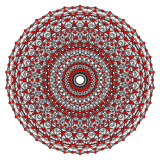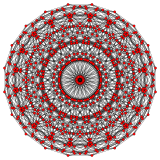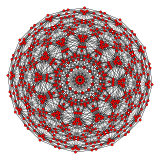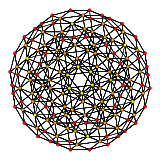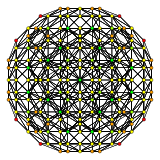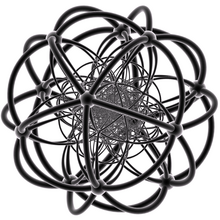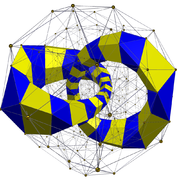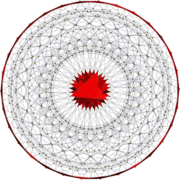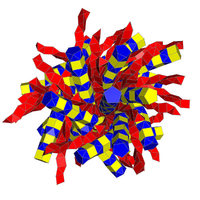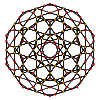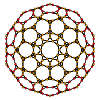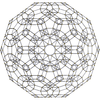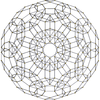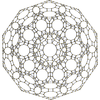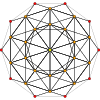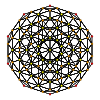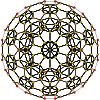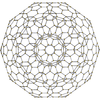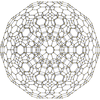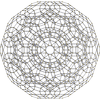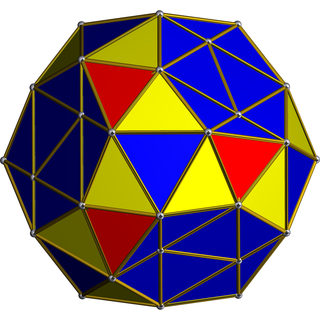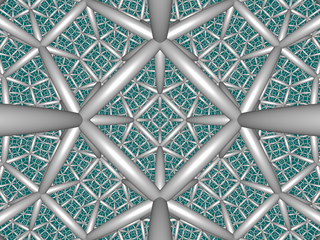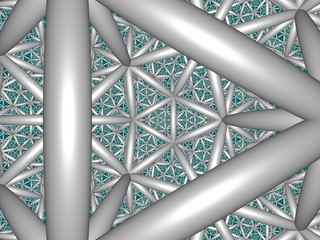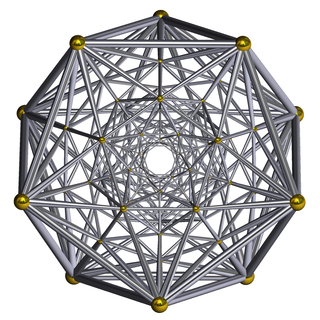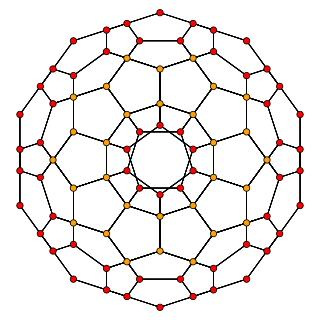| Rectified 600-cell | |
|---|---|
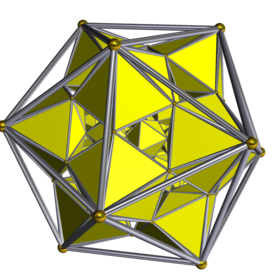 Schlegel diagram, shown as Birectified 120-cell, with 119 icosahedral cells colored | |
| Type | Uniform 4-polytope |
| Uniform index | 34 |
| Schläfli symbol | t1{3,3,5} or r{3,3,5} |
| Coxeter-Dynkin diagram | |
| Cells | 600 (3.3.3.3) 120 {3,5} |
| Faces | 1200+2400 {3} |
| Edges | 3600 |
| Vertices | 720 |
| Vertex figure |  pentagonal prism |
| Symmetry group | H4, [3,3,5], order 14400 |
| Properties | convex, vertex-transitive, edge-transitive |
In geometry, the rectified 600-cell or rectified hexacosichoron is a convex uniform 4-polytope composed of 600 regular octahedra and 120 icosahedra cells. Each edge has two octahedra and one icosahedron. Each vertex has five octahedra and two icosahedra. In total it has 3600 triangle faces, 3600 edges, and 720 vertices.

Geometry is a branch of mathematics concerned with questions of shape, size, relative position of figures, and the properties of space. A mathematician who works in the field of geometry is called a geometer.
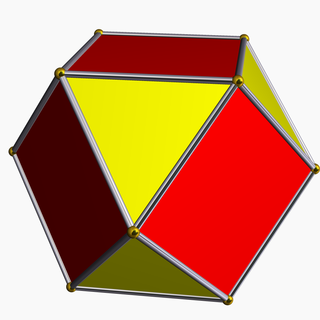
In Euclidean geometry, rectification or complete-truncation is the process of truncating a polytope by marking the midpoints of all its edges, and cutting off its vertices at those points. The resulting polytope will be bounded by vertex figure facets and the rectified facets of the original polytope.

In geometry, the 600-cell is the convex regular 4-polytope (four-dimensional analogue of a Platonic solid) with Schläfli symbol {3,3,5}. It is also called a C600, hexacosichoron and hexacosihedroid.
Contents
- Semiregular polytope
- Alternate names
- Images
- Related polytopes
- Diminished rectified 600-cell
- H4 family
- Pentagonal prism vertex figures
- References
- External links
Containing the cell realms of both the regular 120-cell and the regular 600-cell, it can be considered analogous to the polyhedron icosidodecahedron, which is a rectified icosahedron and rectified dodecahedron.

In geometry, the 120-cell is the convex regular 4-polytope with Schläfli symbol {5,3,3}. It is also called a C120, dodecaplex (short for "dodecahedral complex"), hyperdodecahedron, polydodecahedron, hecatonicosachoron, dodecacontachoron and hecatonicosahedroid.

In geometry, an icosidodecahedron is a polyhedron with twenty (icosi) triangular faces and twelve (dodeca) pentagonal faces. An icosidodecahedron has 30 identical vertices, with two triangles and two pentagons meeting at each, and 60 identical edges, each separating a triangle from a pentagon. As such it is one of the Archimedean solids and more particularly, a quasiregular polyhedron.

In geometry, an icosahedron is a polyhedron with 20 faces. The name comes from Ancient Greek εἴκοσι (eíkosi), meaning 'twenty', and ἕδρα (hédra), meaning 'seat'. The plural can be either "icosahedra" or "icosahedrons".
The vertex figure of the rectified 600-cell is a uniform pentagonal prism.

In geometry, a vertex figure, broadly speaking, is the figure exposed when a corner of a polyhedron or polytope is sliced off.
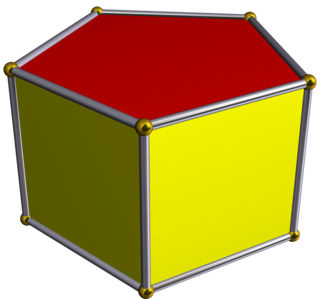
In geometry, the pentagonal prism is a prism with a pentagonal base. It is a type of heptahedron with 7 faces, 15 edges, and 10 vertices.

